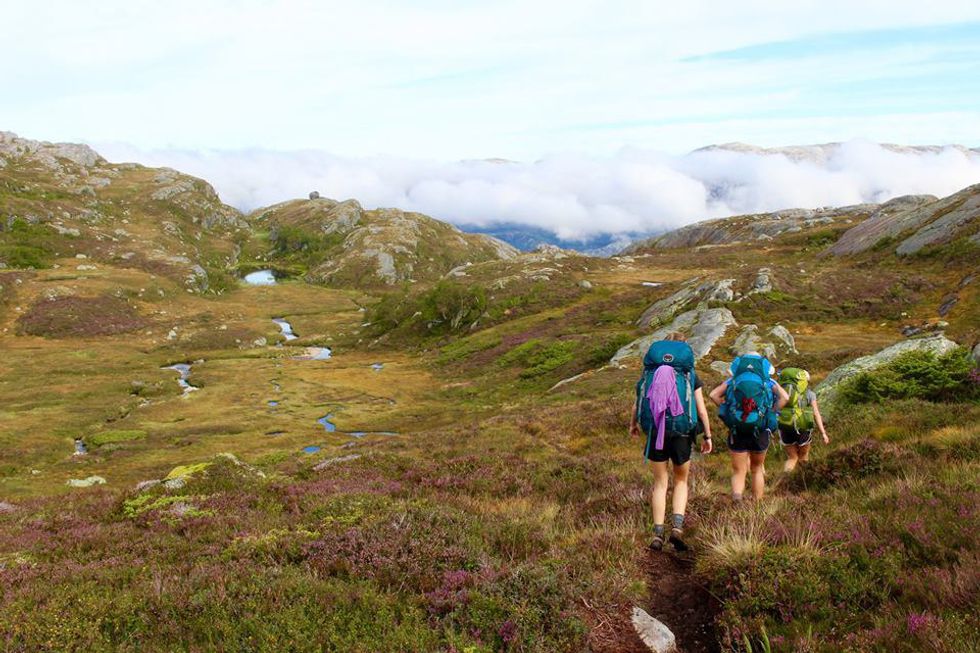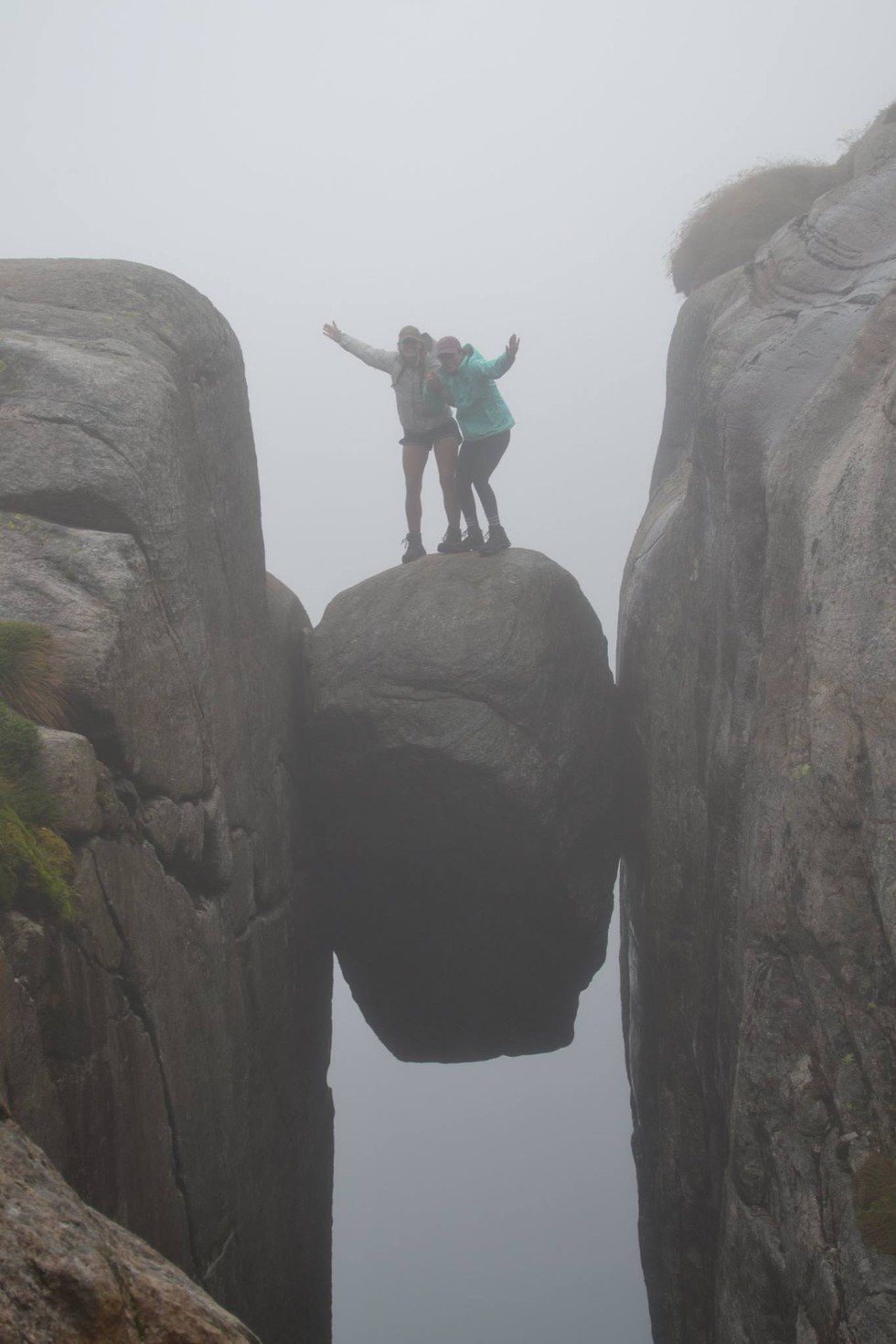“WE . . . SHOULD . . . NOT . . . BE . . . UP . . . HERE . . . RIGHT . . . NOW!” my friend Alexandra screamed to us over howling wind. Even with forty-pound packs on, the wind was nearly blowing us off the mountain. Huge raindrops fell from the sky and hit us on the head like a barrage of tennis balls. I struggled to keep my eyes open as rain collected in my lashes. The fog was so thick that I couldn’t see my own hand in front of my face. I could feel the ice-cold water rolling down the inside sleeves of my jacket and soaking into my gloves, making my hands go completely numb. On the plus side, the numbness helped me forget about my aching muscles. It was only the third day of our trip but there wasn’t a single muscle in my body that wasn’t pulsing with pain. I frantically swiveled my head around in the hopes of spotting a painted red “T,” the trusty trail markers we had been following for nearly thirty miles now. All I could see were the vague outlines of my friends huddled against boulders, desperately trying not to slip down the slick granite. Alexandra was right: We definitely should not be on top of this mountain right now.
Sixty miles in six days. Five friends and I were backpacking around the Lysefjord in Norway and, as with most things in my life, it was a very last minute and hastily planned trip. The extent of research I did was Googling the definition of “fjord” (for those of you who don’t know: (“A fjord is a deep, narrow and elongated sea or lake drain, with steep land on three sides”), briefly scrolling through images of the Norwegian Fjords, deciding in under a minute that I definitely wanted to see them in person, and buying a plane ticket. We didn’t think much about terrain or weather, two things most people would agree are essential when planning a backpacking trip. That’s the thing about my friends and I, though. We don’t plan, we just do.
We learned very quickly that ten miles a day in the rocky, muddy, and often vertical terrain of the Lysefjord was going to be, for lack of a better word, a bitch. By the end of the first day, my boots were already soaked through and I had grown accustomed to the loud squelch of my feet every time I took a step. So, here we were: Stuck on the top of Kjerag mountain with some half-eaten sticks of salami, soaking wet boots, and no idea where to go or what the hell to do. I had to wonder, had our recklessness taken us too far this time? At the bottom of the mountain, we had had the choice of continuing straight along the trail to our camping destination, or making a four-mile detour up Kjerag to see the popular Kjeragbolten, a rock famous for being wedged in the crevice of the mountain roughly 3,245 feet above the fjord. Despite the rain, fog, and high winds at the bottom of the mountain, we started up the ridge without a second thought.











 The minimum wage is not a living wage.
StableDiffusion
The minimum wage is not a living wage.
StableDiffusion
 influential nations
StableDiffusion
influential nations
StableDiffusion












